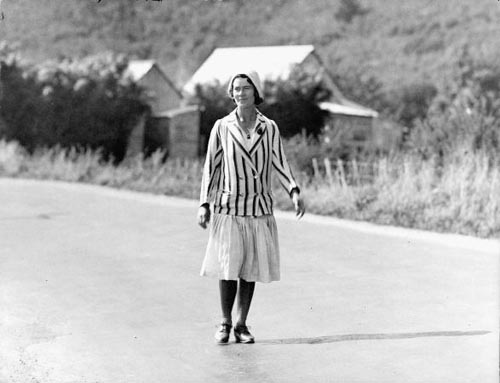I recently bought this piece of pâte de verre glass on TradeMe. It was made by Sue Treanor, probably towards the end of the 1990s. Sue exhibited at an exhibition I remember seeing in Parliament in Wellington in 1999, organised by the NZ Society of Artists in Glass as a promotional vehicle, and she also had a show at Avid in Wellington in August 1999.
Sue Treanor enrolled for a diploma in glass at UNITEC in 1994, amongst a group of students who became quite distinguished glass artists. In August 1996 there was an exhibition entitled ‘Maiden glass: UNITEC girlz come out’ at the Glass Arts Gallery in Ponsonby, a regrettably short lived gallery with quite close links to the UNITEC campus at Carrington. As well as Sue Treanor, those exhibiting were Lou Pendergrast, Nicole Lucas, Megan Tidmarsh, Kellee
Cook, and Layla Walter.
In 1999, Sue Treanor had a piece selected for exhibition at 'International Expo 2' held in Tampa, Florida by the prestigious Glass Art Society of USA. (Former Aussie, now Whanganui artist, Claudia Borella was also included in that exhibition). I have only a poor image of that piece, from an online catalogue, but I want to include it here because it was entitled 'For Marea', a tribute to Maori glass artist Marea Timoko, who has been a significant influence on several New Zealand artists in pâte de verre (and other glass forms). Marea was brought in to give some specialist workshops by Elizabeth McClure, then was Lecturer in Glass at UNITEC.
It's probably time to explain, to the best of my ability as a non-practitioner, what pâte de verre is. Literally 'glass paste' in French, pâte de verre involves making a paste of glass that is applied to the
surface
of a mold, then fired at a relatively low temperature - 'warm' glass. The advantage is that this allows precise placement of particular glass colors in the mold, unlike other
methods of filling the mold, where some shifting of glass from
where it
has been placed prior to firing can take place. Pâte de verre dates back to the ancient Egyptians, but it was revived by a group of French artists in the late nineteenth century who
provided the modern name for this technique. (For the curious, la pâte is paste, while le pâté is what you make from chicken liver and other things).
Sadly Sue Treanor died in March 2012, so I have not been able to talk with her about her work. However, there is another Sue who makes pâte de verre who is very much alive, and living quite close to me in Northland.
 |
| (photo: Ron Hawker) |
Born in Christchurch, Sue Hawker had an international career in journalism and business, but has now settled in Kerikeri (who can blame her for that?) and follows her passion for glass and ceramics. Beginning in 2004, she took applied arts papers at Northland Polytech, and like Sue Treanor was one of a group of students who have become established artists. She also had as a tutor the same Marea Timoko who influenced Sue Treanor.
Sue Hawker has won a number of awards for her glass, most notably being the winner of the prestigious trans-Tasman Ranamok Glass Prize in 2010 - she was also a Ranamok Finalist in 2009, 2011 and 2012. This remarkable
Ranamok winning piece of pâte de verre 'Too Much is Never Enough' is half a metre high, compared with the rather more modest size of Sue Treanor's piece, which is 13cm high.
Ranamok winning piece of pâte de verre 'Too Much is Never Enough' is half a metre high, compared with the rather more modest size of Sue Treanor's piece, which is 13cm high.
 Fortunately for me, Sue Hawker makes smaller works, too, and I am delighted to have a piece of her pâte de verre in my collection, which she made in 2012. It is 11 cm high.
Fortunately for me, Sue Hawker makes smaller works, too, and I am delighted to have a piece of her pâte de verre in my collection, which she made in 2012. It is 11 cm high.



















